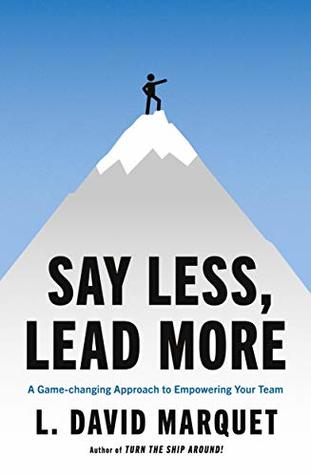More on this book
Community
Kindle Notes & Highlights
Read between
March 5 - March 6, 2021
The right balance of doing and thinking keeps an organization adaptive and agile, innovative and entrepreneurial. It gives the people in the organization a sense of purpose and progress, which helps drive continuous improvement.
Since the deciders and the doers were two different groups of people, leaders needed to convince followers to perform work they had not been part of conceiving, work they had not “bought into.” Leadership was, by necessity, coercive. It was all about getting people to comply with external directions.
For organizations to survive, the doers must also be the deciders. We need the same people who used to view variability solely as the enemy to periodically view variability as an ally. We need the same people who used to have only a performance mindset to periodically have an improving mindset.
The captain’s previous comments were having their intended effect: they suppressed discussion; but of course, they did nothing to suppress doubt or alter the strength of the winds and seas.
Why do almost all executives in workshops jump straight to the cognitively satisfying task of reducing variability? When viewed in the context of the Industrial Revolution, it makes sense. The entire objective has long been to reduce variability.
Instead of relying on someone to signal a pause, preplan the next pause.
When I hear bosses say things like “get everyone on board” or “build consensus,” that’s coercion. That’s trying to convince people “I’m right, and you need to change your thinking.”
It’s only by being truly curious about the outliers’ observations or information and making it safe for them to speak that we will continue to get good variability of expression.
The programmed Industrial Age response is for people to defend their own positions. There is a time and place for that, but the overriding mindset of the leader should be one of curiosity.
We have found the simple rule of starting a question with “what” or “how” significantly improves the questions and the quality of the information coming from the team.
When Captain Sullenberger was piloting an airplane that had lost both engines and he was attempting to land in the Hudson River, he asked the copilot, “Got any ideas?”
Give information, not instructions.
we must reduce the barrier to exit contemplation (bluework) and move to action (redwork).
while “inspire” and “empower” are common workplace mantras that employers hope will spark action and commitment within employees to carry out the desired company goals, unless there is choice there will, at best, be compliance.
Individuals make commitments. Groups do not. Commitment is personal; it comes from within.
Compliance gives us a pass on thinking. Compliance only requires a person to follow rules, instructions, and actions that someone else has determined. It is easy because it relieves a person of the messy process of thinking and decision-making. Worse, compliance gives a pass on responsibility. When it comes to many corporate and operational errors, the common refrain is “I was doing what I was told.”
It relieves bosses from the time-consuming and messy work of having to explain what is going on. But the lack of context creates a fragile situation.
if she thought of the next period of redwork as the doing part of the learning cycle (make a prediction, then test the prediction by observing what happens, then reflect upon our observations with respect to our prediction), then it would be easier for her to make that transition out of rumination and planning into action.
it is easier to commit to action when we put ourselves in a learning mode,
For any significant decision, you are likely to have people who would have chosen a different path. What the organization needs is for the entire organization to align behind the actions needed to support the decision. Trying to convince people that they need to align their mindsets too adds a burden that delays moving forward and requires them to admit “they were wrong.”
Innovations, new product design, and improving manufacturing processes might not reveal the natural bluework pauses like an operational action does.
we need to deliberately chunk the improvement cycle into discrete, small, bite-size pieces, but each one should result in a complete product—testable in the market.
“How long will you be in redwork before your next pause and reflection period?” “What will trigger a pause to this next phase of the project?” “How will we know if our hypothesis tests out?”
“How could we start?” “How could we test that quickly and cheaply?”
a thought experiment in which they had been fired and other people were determining the future direction of the company.


